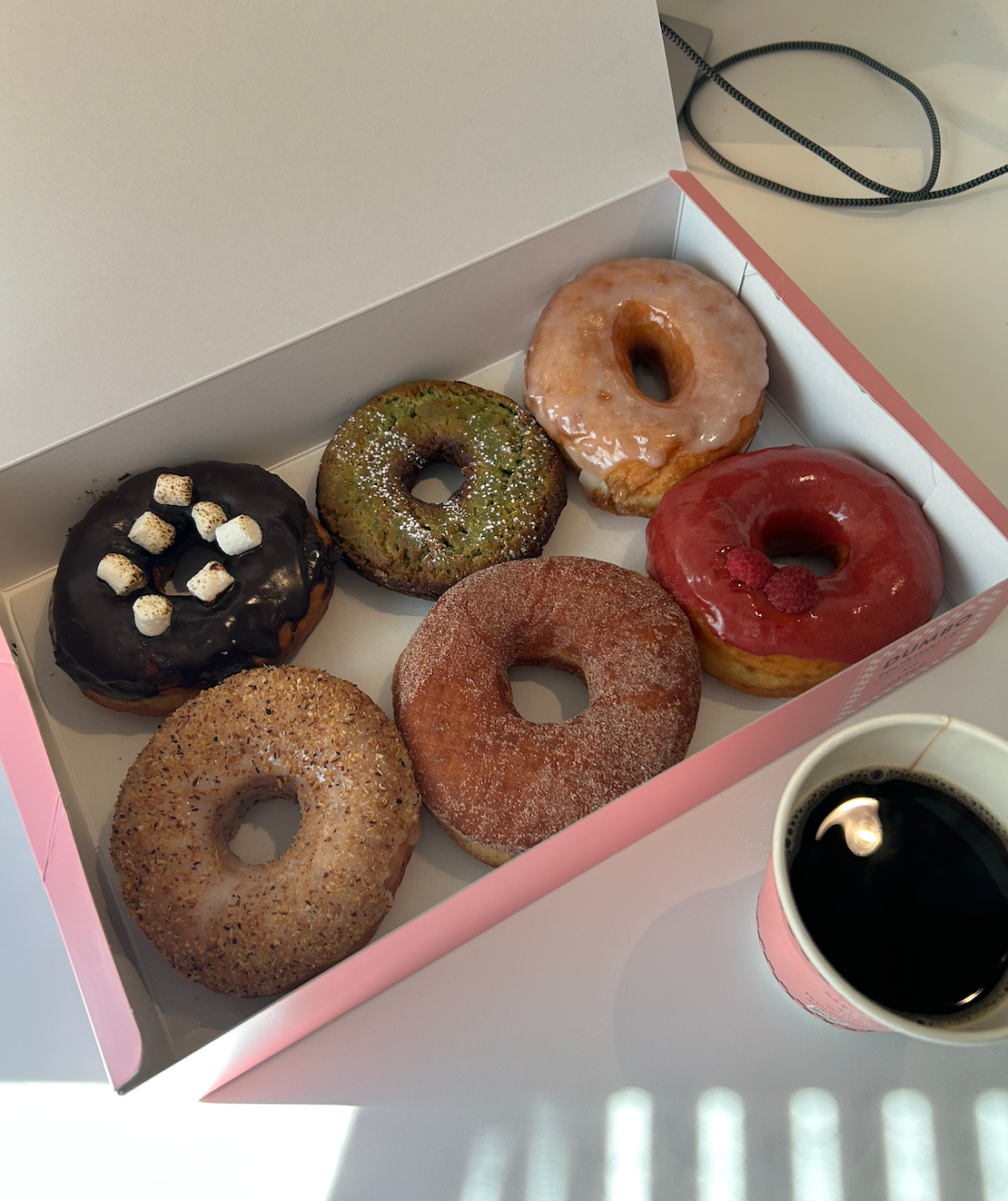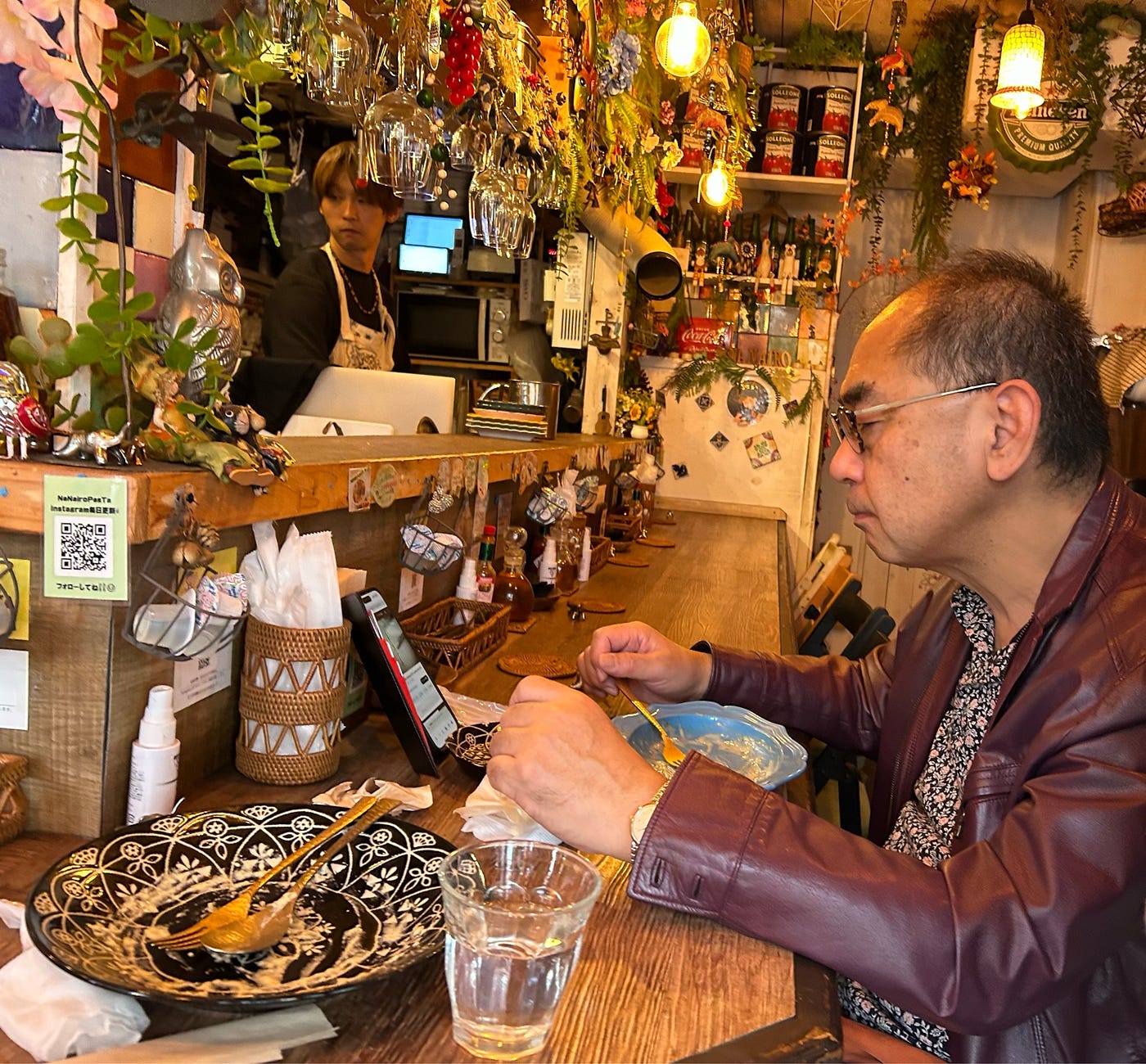Winter has arrived in Tokyo.
The stubborn cold breeze on my face convinced me to break out my winter jacket for the first time this year.
It’s a favorite of mine — one my dad bought when he was my age and has carefully preserved ever since. I begged him last year to let me borrow it from his closet. Now, wearing it feels like he’s protecting me, the jacket wrapping around my shoulders in a way that makes me feel safe and warm.
As I sit wrapped in this comforting jacket at a Starbucks, waiting for my dentist appointment just a block away, I reflect on my week 1506.
1. A Small Change Can Spark a Big Shift.
Last Saturday evening, I was drying my hair in the cold bathroom.
It was cold, not just because I was half-naked after taking a bath, but because it was winter, and the icy air seemed to find every crack in the room, making my skin tingle.
The hair I had grown for over half a year was freshly washed and oiled. “It’s the trendy cut among young ladies in the city,” the hairstylist had said as he layered my straight, dense, slightly brown curtain of hair.
But that evening, as I stood in front of the mirror, waiting for my damp ends to dry, I couldn’t help but feel a shift. The cold was unbearable, and the hair at the bottom wasn’t drying fast enough. I looked at myself in the bathroom mirror and thought,
Okay, it needs to go.
The next day, on Sunday evening, I found myself at a hair salon again. The stylist cut off 20 centimeters.
Now, my hair dries in half the time, and I no longer worry about the damaged ends.
New hair, new me.

2. Start with What You Desire Most — Don’t Leave It for Last.
On weekends, my usual meal routine tends to slip away from the 16:8 fasting window I follow during the workweek. I often eat just one big meal, typically in the afternoon or sometimes earlier in the day.
This suits me because it simplifies things: I only need to think about food once, leaving my mind and hands free for other activities. I enjoy experimenting with my meal routine, but that’s a topic for another time, so I’ll save the details for later.
Last Sunday, my meal consisted of a family-sized box of donuts from Dumbo. The staff at the shop gave me three packs of wet tissues. No, I wasn’t sharing the box — these donuts were all for me — but I understood why they assumed otherwise.
As I eagerly took my first bite, the soft, sugar-filled dough sent a rush of dopamine through my system. It was sweet, satisfying, and delicious.
But, as often happens, that initial burst of pleasure didn’t last long.
After just two donuts, I was already starting to feel full. The rest of the donuts became a blur. I couldn’t remember which ones I ate in which order, or even whether they tasted any different from one another.
More importantly, I didn’t enjoy them nearly as much as the first two.
By the time I reached the last one, I was too full to appreciate it. What was once my favorite choice no longer held the same appeal.
In terms of life, you can take this lesson this way:
When faced with multiple options — something increasingly common in our modern world — it’s more important than ever to take a step back and choose wisely.
The key takeaway for me was the importance of starting with what matters most, so-called prioritization. In this case, that means enjoying your favorite donut first. If you’re not into donuts, that’s fine. The principle still holds.
The choices you make at the beginning set the tone for everything that follows.
- The first bite will always be the best.
- The more you consume, the less appealing the remaining options become.
- You may not even finish all of them, either because you’re too full, you run out of time, or unforeseen distractions arise that shift your focus and change the conditions under which you made your initial choice.
So, whether it’s donuts or life decisions, start with what you want most. The rest will follow.

3. The 10,000-Hour Rule
One of the small joys of living in the same city as my parents is the ease with which I can spend time with them. I appreciate this.
The other day, I went out for pasta with my dad at his favorite pasta restaurant.
We sat across from each other at the corner of the counter, and as I enjoyed my meal, I shared updates on my life. As always, my dad nodded along, saying things like “uh-huh” or “I see” as he listened to me.
But then, suddenly, his replies stopped.
I looked up from my plate and noticed that my dad had finished his pasta. He was no longer looking at me. Instead, his lips were pressed tightly together, and his hands were moving in small, precise motions.
Following his gaze, I saw that he was watching a video on his phone — something about surgery.
“Ah, here we go again,” I thought to myself.
This scene reminded me of the 10,000-Hour Rule discussed by Cal Newport in his book So Good They Can’t Ignore You.
The 10,000-Hour Rule is based on the idea that true expertise in any complex skill requires a critical minimum of practice — specifically, about 10,000 hours. Studies of highly successful individuals in various fields consistently point to this threshold as key to mastering a craft.
My dad works as a surgeon and, in every spare moment, strives to refine his surgical skills. I’ve seen him do this for as long as I can remember. Whether it’s reading medical journals, watching videos, or practicing techniques, he’s always striving to improve.
Watching him in action, I realize how much he embodies the idea of the 10,000-Hour Rule.
To me, his dedication is inspiring, and it makes him all the more admirable.

That’s all for this week.
Hope you had a great week as well.
Catch you next week!